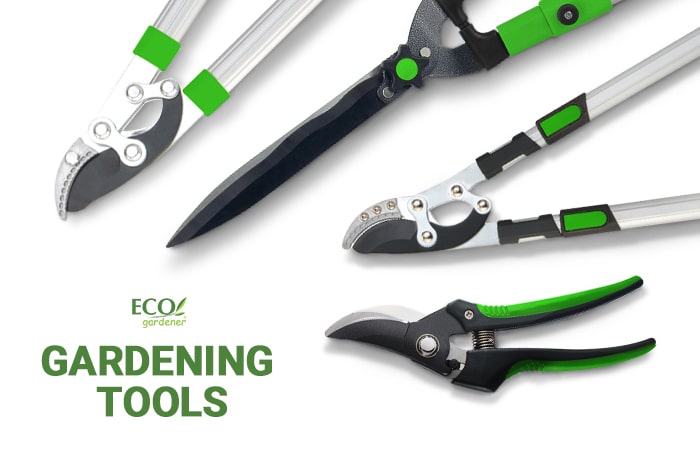Moving to a new house is stressful, especially considering moving the entire garden with you! This is something that only a few people are talking about – is it possible to take your garden with you as you move? Is it a good idea to move the garden, or is it better to start from scratch?
In this guide, we’re outlining tips on moving the garden to a new home, what essential factors to consider before the move and how to bring back the vitality to your plants after moving:
Contents []
Should You Move Your Garden?

While moving your garden to a different location is possible, the question you should ask yourself is, should you do it?
Is it much easier to start from scratch than move your old garden into a new location? It’s hard to see all your hard work gone after moving to a different city, but when you think about it, the new homeowners might love your old garden. That’s the purpose of building a garden in the first place; you want people to enjoy your outdoor space as much as you did.
Moving an entire garden to a new one isn’t a small feat. You can’t just delegate this task to the movers; it has to be done carefully to minimize the trauma transplanting may inflict on the plants. Moving and replanting plants is something you should do yourself or a professional.
If you decide to move your garden into your new home, you must plan carefully for a smooth transition. The plan starts by setting boundaries because, realistically, you won’t be able to move ALL the plants – like that 35-year-old lemon tree in the backyard. Start by choosing which plants to prioritize and which can survive the move. Plants to prioritize are:
- Rare plants
- Plants with sentimental value
- Familiar plants that bring you comfort
- Plants that remind you of home
Plants like herbs, succulents, and cactuses are pretty small and resilient – these should survive the move. Some flowering plants may need more care because these are sunlight lovers. Your vegetable patch can be moved, but it’s best to harvest first so fruits won’t go to waste. Vegetables can be sown in the new property instead of moving live crops – many are fast growers, so starting from scratch is much easier. Entire hedges, shrubbery, trees – these big plants should be left behind. Big plants have complex root systems that, if damaged, may kill the plants.
5 Factors to Consider Before Moving the Garden to Your New Home
Consider the season: The weather has to be right when you’re moving plants to minimize transplanting trauma. Avoid moving the plants in the middle of the summer season, just as the temperature is at its highest. Plant roots are more vulnerable to the elements if the weather is hot and the air is dry. The fall season is the best time to transfer plants, so if you can control the time of your move, this is the most favorable season.
Prepare the plants well: The plants must be well-hydrated before being transported and transplanted. Cover the roots with soil; these should never be exposed to dry air. If the plants look too thirsty, they might not weather the stress of moving. A deep soak for several days helps reduce the stress of a move. Trim the leaves using a hand pruner to help the plants conserve energy during the move. Start with the dead and excess stems, then give one final once over to ensure the plants aren’t using valuable energy on parts they don’t need.
IMPORTANT: The plants should always be the last thing to be packed for moving and the first to be planted once they arrive at their new home.
Uproot carefully: Using a trowel, dig a wide ring around the plant, and as the roots are uncovered, dig carefully, so you’re not cutting through any root. Once uprooted, wrap the roots in a damp burlap sack or place them in a pot with soil. Do not remove any of the soil attached to the roots. In fact, keep as much soil as possible to the roots to protect these from the elements.
Replant immediately: It’s important to replant the uprooted plants as soon they arrive at their destination. Once they make it to their new home, unpack with care and start planting. Planning the setup must be done before moving. Place the plants in watered holes and cover them halfway with potting soil. Water just enough to soak the roots, then cover the hole with fresh soil. Avoid using compacted soil because this will restrict airflow and potentially kill the plants.
Minimize stress: You need to take extra steps to reduce stress on the plants in their new home. Keep direct sunlight away from newly transplanted plants for at least a couple of days so they don’t dry out. Let the plants adjust to their new home. Water the plants every day or when needed. Check the plants daily for signs of trauma like browning and yellowing leaves, falling leaves, etc. Protect the plants from diseases and pests as they regain strength.
Moving Your Garden with ECOgardener

Moving your garden to a new home can be less taxing by carefully planning your strategies and giving the plants extra TLC a few days before the big move. Having the right garden tools is just as essential to avoid damaging your precious plants for transplanting! With these tips, you should be able to replant your garden successfully!
Replanting or moving your garden shouldn’t be stressful. ECOgardener offers gardening supplies and tools that are essential to do this job.



